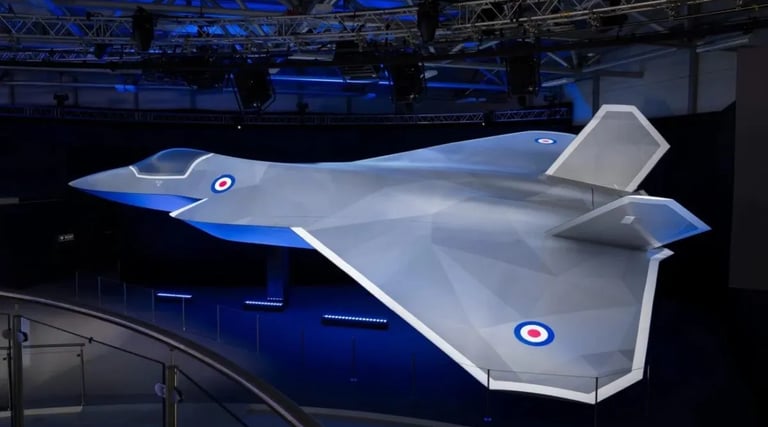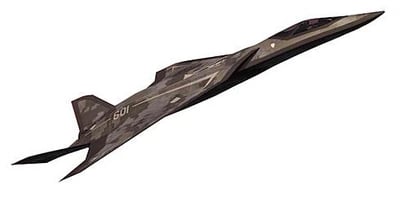India's Ambitions for a 6th Generation Fighter Jet
India is actively pursuing the development of a 6th generation fighter aircraft, a project linked with its Advanced Medium Combat Aircraft (AMCA) program.
TECH
7/30/2025


India's Ambitions for a 6th Generation Fighter Jet
India is actively pursuing the development of a 6th generation fighter aircraft, a project linked with its Advanced Medium Combat Aircraft (AMCA) program. While the initial AMCA is a 5th generation stealth fighter, India aims to integrate 6th generation technologies, particularly in the advanced Mark-2 variant.
Key characteristics of the proposed Indian 6th generation fighter
Advanced stealth: Enhanced stealth features, potentially including adaptive stealth and advanced radar-absorbing materials.
AI-driven combat systems: Integrating Artificial Intelligence (AI) for faster decision-making, enhanced situational awareness, threat identification, and assistance in complex combat scenarios.
Manned-unmanned teaming (MUM-T): The ability to coordinate with and control unmanned aerial vehicles (UAVs) or loyal wingman drones.
Directed-energy weapons: Possible inclusion of laser-based or high-energy microwave weapons.
Advanced avionics: Next-gen sensor fusion for a 360-degree view of the battlefield.
Optionally manned: Capability to operate both with a pilot and autonomously.
Powerful engine: Development of a 120 kN indigenous engine capable of supercruise (supersonic flight without afterburners), potentially in collaboration with foreign partners like Rolls-Royce, Safran, or General Electric.
Current status and timelines
The 5th generation AMCA project received government approval in 2024 with a budget of ₹15,000 crore for prototype development.
The first AMCA prototype roll out is anticipated by 2028-29, with the first flight expected by 2029.
Service introduction is targeted for 2034, and series production by 2035.
The more advanced AMCA Mark-2 variant incorporating 6th generation features is expected by 2040.
India has reportedly recommended a strategic partnership with France to co-develop the 120 kN next-generation engine, a project valued at ₹61,000 crore.
Challenges
Technological gaps: Developing indigenous advanced technologies like stealth, engines, and avionics is a major hurdle.
Funding and expertise: Significant investment and access to global expertise are crucial for the development of these highly complex systems.
Competition: Other major powers like the US, China, and Europe are also investing heavily in 6th generation programs, creating a challenging race for India to keep pace with.
Past delays: India's previous experience with projects like the LCA Tejas highlights the importance of timely execution and avoiding delays.
Importance for India
Modernizing the fleet: The 6th generation fighter is intended to replace aging aircraft like the Su-30MKI and counter the growing threat from advanced fighter jets in the region, such as China's J-20.
Self-reliance: Developing advanced indigenous technologies reduces dependence on foreign suppliers and strengthens India's defense industrial base.
Strategic deterrence: Possessing cutting-edge fighter aircraft capable of deep penetration strikes and dominating contested airspaces is vital for maintaining regional deterrence.
Global aerospace leadership: Success in developing a 6th generation fighter will position India as a leader in advanced aerospace technology.
India's journey towards a 6th generation fighter jet is ambitious and challenging but signifies its commitment to becoming a major player in advanced air combat capabilities. This will not only make India's skies safer but also demonstrate its leadership in defense technology.
(This is an AI generated response feed; AI responses may include mistakes. Readers are encouraged to view at their own discretion.)


Ideagiri: Online platform for Education: Govt Colleges and Universities, Govt Jobs, Exams, Internships, Business, Finance, Technology, DigiCult and more - Ideagiri.com
Nocont@ideagiri.com
© 2025. All rights reserved.
